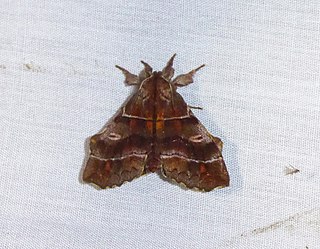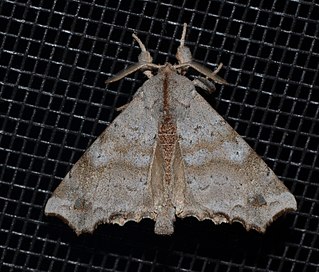
The Bombycidae are a family of moths known as silkworm moths. The best-known species is Bombyx mori (Linnaeus), or domestic silk moth, native to northern China and domesticated for millennia. Another well-known species is Bombyx mandarina, also native to Asia.

Apatelodidae, the American silkworm moths, is a family of insects in the order Lepidoptera. They are a family within the superfamily Bombycoidea, though they have in the past been considered a subfamily of Bombycidae.
Rolepa is a genus of moths of the family Phiditiidae. The genus was erected by Francis Walker in 1855.
Ephoria is a genus of moths of the family Apatelodidae. It was previously known as Colabata, as a result of Herrich-Schäffer's Synopsis familiarum Lepidopterorum—in which Ephoria was introduced—having been published twice. The earlier of these publications precedes that of Walker's Colabata in 1856, making the latter the junior synonym.
Drepatelodes is a genus of moths of the family Apatelodidae.

Apatelodes is a genus of moths of the family Apatelodidae first described by Packard in 1864.

Prothysana is a genus of moths of the family Apatelodidae. It contains two species, whose larvae are known as shag-carpet caterpillars. They are found from Mexico, south to Panama and into South America, at least to Ecuador.
Prothysana terminalis is a moth in the family Apatelodidae whose larvae are known as shag-carpet caterpillars. The species was first described by Francis Walker in 1855. It is found in South America.
Thelosia is a genus of moths of the family Apatelodidae. It was first described in 1896 by William Schaus, containing at the time three species: Thelosia phalaena, T. camina and T. truvena. Since then, several additional species have been described.

Thyrioclostera is a genus of moths of the family Apatelodidae which was erected in 1929 by Max Wilhelm Karl Draudt. It is monotypic, having a single species, Thyrioclostera trespuntada originally described as Callopistria trespuntada by Paul Dognin in 1894, and which is known from Ecuador and Peru.

Zanola is a genus of moths in the family Apatelodidae.
Ephoria dora is a moth in the Apatelodidae family. It was described by Schaus in 1896. It is found in south-eastern Brazil.
Ephoria eadgara is a moth in the Apatelodidae family. It was described by Schaus in 1934. It is found in Brazil.
Ephoria liliana is a moth in the Apatelodidae family. It was described by Schaus in 1900. It is found in Brazil (Parana).
Drepatelodes friburgensis is a moth in the family Apatelodidae. It was described by Schaus in 1924.

Pantelodes satellitia is a moth in the family Apatelodidae. It is found in Costa Rica, French Guiana and Bolivia. It was transferred from Apatelodes to the newly-established genus Pantelodes by Daniel Herbin in 2017.
Thelosia jorgenseni is a moth in the family Apatelodidae. It was described by William Schaus in 1927. It is found in Paraguay.
Thelosia truncata is a moth in the Apatelodidae family. It was first described by William Schaus in 1894, as Trabala (?) truncata. It is found in Brazil (Parana).

Olceclostera is a genus of moths of the family Apatelodidae.
Pantelodes is a genus of moths of the family Apatelodidae. It was first described by Daniel Herbin in 2017, containing at the time nine species: Pantelodes satellitia and eight newly described species previously identified as the former. In 2021, an additional species, Pantelodes camacana, was described. The distribution of the genus is Neotropical.









